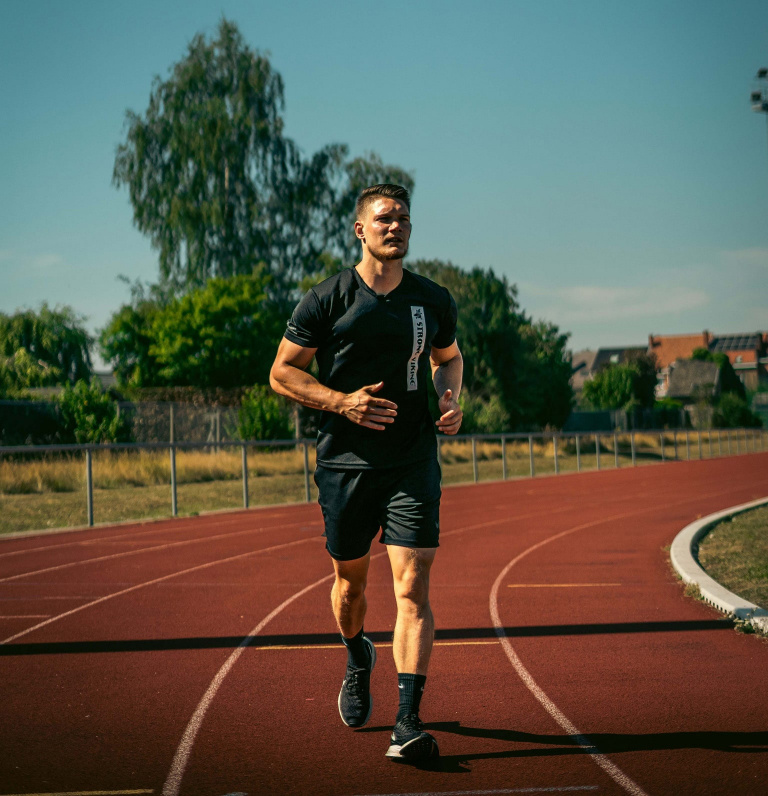The term ‘Hybrid athlete’ has become more popular on social media in the last couple of years. Take Fergus Crawley for example, a former powerlifter that completed a 600 kg squat, deadlift and bench total, and a sub 6 hour 60 km…in one day.
Now you don’t need to be training to these kinds of extremes, but it’s proof that you can work on both your strength and endurance performance at the same time. It turns out, unless you’re participating in elite Olympic lifting or high level Ultramarathon running, you too can become a hybrid athlete.
Interested in cycling and want to make a career of it? Why not consider taking a group indoor cycling instructor course?
What is hybrid training?
Hybrid training is a method whereby you simultaneously increase both your strength and endurance performance using two different training methods. The most common types of hybrid training are resistance training along with either running or cycling.
Traditionally, it has always been thought that you can only have one or the other, strength or endurance. Most of this belief comes down to a famous research study in the 1980s by Robert Hickson. In this study they tested whether training for both strength and endurance would have a detrimental impact on performance, and it turns out it did. In comparison to the strength only group, the cohort that performed strength training and running eventually plateaued in their strength performance before the strength group. This became known as the interference effect.
As a result, coaches have avoided giving endurance athletes strength training and vice versa. However, there were some problems with the study. The main being that the athletes were training at a high intensity for both their strength and endurance work. It may not have been the fact that two training methods were being used, but just that there was an accumulation of fatigue. This is why exercise selection and programming is essential when it comes to hybrid training.
It turns out that hybrid athletes are increasingly proving this theory wrong, with PB powerlifting and long-distance runs on the same day. And the biggest disproof of this theory…CrossFit athletes.
Concurrent vs hybrid training, what’s the difference?
When researching hybrid training, it is often confused with concurrent training. They both consist of strength and endurance, but they’re not the same thing.
Concurrent training is a method of using one training system to benefit the other. Many athletes use strength training as a way to improve performance in their sport. For example, there is evidence that strength training can improve running performance, which is why sprinters use heavy weight training. It can build strength in the lower body muscles and improve running economy, both factors which affect running performance.
Hybrid training on the other hand is all about trying to improve both. Increase muscular strength whilst also improving cardiovascular performance. You aren’t doing one to enhance the other but training both in equal parts.
Benefits of hybrid training
But, one thing you must take into account is the training load and whether you can commit that much time to training. You’re essentially trying to train for two different sports which could mean up to double the amount of work done. If you’ve already got a lot of commitments then you should consider whether you have the time for hybrid training.
Who’s it for?
There has been an emerging trend of ‘Hybrid athletes’ who are trying to improve all areas of their fitness.
Although anyone can participate in hybrid training, it is more suited to people that have an intermediate/advanced level of experience in their endurance sport or weightlifting. Due to its nature, hybrid training puts a lot of pressure on the body which is why someone already adapted to one of the training types is best. Their body is used to performing one mode of exercise and can then concentrate on improving the other.
A group in particular who benefit from hybrid training is CrossFit athletes. CrossFit includes a multitude of types of exercise, including short and longer bouts of cardio, strength, Olympic lifting and gymnastics. CrossFit athletes need to be incredibly well rounded.
Planning a hybrid training programme
Planning is crucial when it comes to writing a hybrid training programme. The most important thing to consider for a hybrid athlete is trying to limit fatigue. There is going to be a high volume of training, and so sessions need to be strategically planned so that fatigue doesn’t carry over from one session to another (unless this is intended). Here are some considerations for training:
- Keep at least 8 hours between strength and endurance sessions
- Try to keep strength and endurance on separate days
- Make sure you fuel in between sessions
- Keep your long endurance sessions on their own
- Strength training should be low repetition
Bottom line: Despite popular belief it is possible to build strength and improve endurance performance at the same time. The most important things to consider are fuelling yourself appropriately for the volume of training and timing your sessions so that strength and endurance don’t interfere with each other.


